10-20-30-40 meters? 30-60-90-120 feet? How long can you cast with a one hand rod? And how long does and average fly-angler actually cast? GFF partner Martin Joergensen has done some research and talked to some experts.
There seems to be an eternal strive among fly-anglers to cast further. Only a few anglers do actually cast really far, and the fish don't necessarily bite on the fly, which is cast the longest distance. In spite of this fact a lot of casting discussions are about casting distance rather than about casts, which catch fish.
Casting lies
It is probably mainly saltwater anglers who have introduced this strive for distance. Let there be no doubt that casting distance can be an advantage in saltwater as well as on other waters. That has led to a natural development towards equipment that yields some extra yards in the cast. Fast rods, complex tapers, slick coatings, smooth shooting lines, clips, baskets, lubricants and what-have-you has been brought to market to satisfy the urge for distance.
Saltwater fishers are not the only ones to blame for this fight for distance. Stream anglers are welcome to join in. Why is it that the best fish always seem to be under the far bank, when it appears to be a spitting image of the near one? People seem to have plenty good arguments to fish the opposite bank rather than your own, which is after all much closer.
I know about feet and meters...
OK, let me say right up front that I know that 120 feet is 36.576 m and not 40 and that 30 meters is 98½ feet rather than just 90 as I might quickly convert!
And sure it makes a difference if you are setting records or measuring your property. But in this case I take myself the liberty of simply dividing by and multiplying with 3 rather than 3.048 as it should rightfully be. Forgive me for not hauling out the calculator every time...
You can try it here... 321 feet... 123 meters.. see?
Well then. How far is far? And how far can an angler actually cast when push comes to shove?
The famous 60 meters cast
When I talk casting with my fishing friends, we often mention an angler, whom we all know, and who consistently claims to be able to cast 60 meters or about 170 feet under good conditions. Few casters are that optimistic, but the number 40 meters or around 130 feet is often heard as a bid for the distance of a really good cast.
I also read an entry in a Danish discussion forum, written by a distraught angler who was depressed because he could "only cast 24 meters". That's "only 78 feet".
60... 40... 24... what is good and what bad?
That question plus my own impression of myself as a mediocre fly caster made me curious.
I wanted to find out how far a fly-angler can cast.
I wanted to find out how far a fly-angler can cast.
Real casting distance
I started looking for information on real casting distances for ordinary anglers and for anglers who are known to be able to cast really far.
And let me make one thing certain right away: very few fly anglers cast further than 238 feet or about 72 meters and 50 centimeters with a one-hand rod. Because that is the official world record in fly casting set by the American caster Steve Rajeff.
He has cast 248 feet (75.6 m) in Pretoria, South Africa in 1997, but that record was not officially registered due to too much wind. Casters who on occasion cast up towards 80 meters or more than 260 feet have been reported, like the Welsh casting demon Hywell Morgan. But the official record stands and belongs to Rajeff.
Casts like Rajeff's and Morgan's are only done under special circumstances and with special gear. We mortals cannot expect to come near that, even when casting on a lawn, and much less when casting on water.
How far is far?
Record casts are done with special rods and lines, which adhere to the official rules for casting tournaments.
A one-hand set-up consists of a rod, which is shorter or equal to 9'9". The AFTM class is optional, but somewhere between 10 and 13 is common.
The shooting head length is limited to 49'3" or just above 15 meters, and it must weigh less than 650 grains or some 42 grams.
The leader must be more than 6 and less than 12' or some 2-3.5 m.
There's a fly on the leader and the cast is measured to where this fly lands.
The choice of shooting line is free, but thin monofilament is usually the order of the day.
Grass and power
Tournament casts are performed standing on grass, and are usually done with elaborate casting movements and lots of power combined with a very well developed technique. Not to mention preparation, mainly consisting in laying out the shooting line in large coils on the ground.
So really long tournament casts are done under some circumstances and with some gear, which is very far from what the rest of us use.
Below I list the US casting instructor Jim C. Chapralis' bids on casting lengths for different types of anglers. Chapralis' list is based on gear of a more common character, namely a sturdy 9' rod for a 9 or 10 weight line, loaded with a 300 grains shooting head and a stiff and smooth, easy-handling shooting line.
In other words fairly heavy equipment, but certainly something that can be used for fishing. It's still a far cry from the average angler's 4-7 weight rod loaded with a weight forward line, but still...
Jim C. Chapralis' list
If you can cast this far:
18-21 meters or 60-70 feet or less: Good going. It's a start.
22-27 meters, 70-90 feet: Consider yourself a fairly good caster (you are throwing a heavy shooting head which, for some people, is harder to cast than a lighter outfit with a standard fly line).
27-33 meters or 90-110 feet: You've learned the double haul well and with more practice can develop into a very good distance caster.
33-38 meters or 110-125 feet: Superb. With a few tips you could move up into the next bracket. While this distance is not particularly impressive in tournaments, it indicates that you understand the basics and with some practice you will quickly ascend to the next level.
38-43 meters or 125-140 feet: See what I mean, about getting a high when you uncork a long cast! Great isn't it? You bet! You're an excellent distance caster.
43-49 meters or 140-160 feet: Wonderful! Feel proud! You have climbed a peak that very few anglers have reached. You're in the elite class. If you aren't a tournament caster, you're one heckuva good caster and definitely ACA National Casting Championship material!
Over 49 meters or 161 feet and more: Surely you've done lots of tournament casting! I doubt that there are more than a dozen anglers in North America who can cast this distance under normal weather conditions.
Adapted from Angling matters, which is no longer online, but can be found on archive.org here and here
There are several things to note about this list.
- Casts shorter than 90 feet or 27 meters do not impress Chaprelis. Most of us are in that end of the scale. And ordinary WF-line is 85-90 feet or some 27 meters long. Only the minority of fly anglers can cast out a whole line.
- Casts longer than 160 feet or 50 meters are for the super elite in casting, and nothing that anybody will obtain under normal fishing conditions.
- Casts longer than 190 feet or 60 meters are very rare. Even with specially tuned casting gear.
So the friend I mentioned in the intro might be well advised to adjust his optimistic estimates of his casting distance.
Gear for practical fishing
If you want to beat a world record the recipe is a 10-12 weight rod with a spine beyond the average, an extremely heavy and long shooting head and a shooting line that's impossible to handle - which by the way has to be arranged neatly on the ground before every cast. Not really the recipe for stealth, elegant presentations or practical fishing altogether.
My own equipment for average fishing with some need for distance is a rod between 8'8" and 10' for a line in the 5 to 7 weight range, a shooting head of about 10 meters or 32' weighing between 14 and 18 grams or half an ounce plus a bit. The shooting line is braided sometimes coated. I never use monofilament.
60 feet is far away!
Until recently I had never measured my casts, but I have always known that I only rarely - like in never - cast 90 feet or 27 meters. My flies mostly fall within the 20 meters or in the 65 foot range.
Among the guys I usually fish with there are a couple who might sometimes reach the 35 meters mark or get out to 115 feet under the right wind conditions. That's measuring the line out of the tip top and not the distance to the fly.
But 60 meters or 200 feet?
I think not!
To get more evidence on these distances we packed a measuring tape and some rods and ventured off to a local park.
Let me tell you right away that once the measuring tape was fully rolled out I started getting cold feet! The tape was a mere 20 meters or just 65 feet. 65 feet is far away! Like really far away.
To make things even worse we measured out and additional 20 meters and that was when I realized that I have never cast 40 meters (130 feet) and hardly even 30 (close to 100 feet).
The measure tape doesn't lie
This took place on a calm afternoon, and the wind we usually prefer to help carrying the line and straighten the leader just wasn't there.
Personally my best cast was about 25 meters or 80 feet and my shortest casts were just under 20 meters or 65 feet.
The best among us laid out about 35 meters, which is 115 feet, and the average for our group was probably in the 20-25 meters interval or between 65 and 80 feet.
This was using the gear we use every fishing day on the Danish coast: 9-9½ foot 5-7 weight rods with shooting heads and different types of shooting lines.
Most of us had a hard time stretching the leader and more often than not the fly would land behind the front part of the leader and even behind the tip of the fly line.
It was no surprise that the combination of line and rod had a great influence on the casting length. It was also obvious that the AFTM weight of the rod and line had little effect on the casting length as long as the combo was well matched.
What the experts say
During the Danish Fly Festival in Kolding I grabbed the opportunity to talk about casting with some of the real experts in the area:
- Local Danish angler, FFF casting instructor Lars Christian Bentsen
- Swiss Günther Feuerstein leader of FFF's European casting program
- Henrik Mortensen, renowned Danish salmon angler, casting instructor and developer for Danish Scierra
Their common conclusion is that few casters can cast a full WF line. With a shooting head a casting distance of 30 meters/100 feet or more is decent. Most fish are caught closer than 15-20 meters or 50 feet and then some. Very few fly-anglers can cast 40 meters or 130 feet and when they do it's not a beautiful sight, and the fly will most likely not be the part of the rig, which is furthest away.
How do we get better?
There are a few ways to get better. In order of importance - providing your rod, line and leader are not totally out of sync.
- Technique is number one, and here I am first and foremost referring to a basic cast with a WF line. Timing has to be perfect and a double haul is a natural part of a good distance cast.
- Practice is number two. Without practice you won't learn it. In other words: spend a lot of time with the fly rod, cast under difficult circumstances, train the strokes and cast on grass to keep the skills alive and tune the details in the cast when you can't go fishing.
- Trim the gear as the third issue. Make sure rod and line are well matched to each other and your casting style. Underlining is a common problem for the inexperienced. Most rods handle heavier lines than specified and will load with less line out when the line is a bit on the heavy side. Also consider the leader. A good leader will stretch well and help making a short cast longer.
If you are a shooting head caster, consider using a longer head of the same weight. WF casters can choose a line with a longer head. The longer head will enable you to have more line in the air and get a longer cast. - Self criticism and other caster's comments is number four. Look at yourself, film yourself on video, cast on grass together with others and comment each other's casting.
Experts talk
Günter Feuerstein
- 35 meters is a long cast!
That's what Swiss Günter Feuerstein says about a 115 feet cast. Günter is a well known caster with a lot of experience and routine as an instructor. He is the leader of Federation of FlyFisher's European casting program.
- Good casters will cast 30-32 meters or up to 90 feet and a bit, he says
- And that's on grass, mind you. Under practical fishing the casts are a lot shorter.
On a question about his own longest casts he answers:
- about 35-40 meters/100-120 feet I'd guess. But it doesn't matter. Fly casting is aesthetics and elegance - not power and distance!
Power casters who can toss out 80 meters of line with 12 weight rods don't enjoy his deepest respect. He emphasizes the understanding of the mechanics of the cast, the rod and the body, and he keeps on returning to the message of learning the basics first. Then you can increase casting distance step by step if you want.
As he says:
- There is rarely a reason for long casts during normal fishing.
Lars Christian Bentsen
- I know exactly how far I can cast, says Lars Christian Bentsen.
- 36 meters or 118 feet with a shooting head and a monofilament shooting line on an 8-weight rod.
The reason Lars knows it so precisely is that he measured his cast just a few days before we speak.
He can call himself FFF European Fly Casting Instructor and belongs in the high end of the scale when we're talking fly-casting.
- When fishing I'm probably closer to 27-28-29 meters or up towards 95 feet when I manage a good cast, he continues.
- My average is lower than that.
He tells that he often asks the participants on his courses whether they can cast a whole WF line.
- If ten says they can, there is usually just one who actually does it when we measure it on a lawn afterwards. And a WF line is typically 27 meters or less than 90 feet, he explains.
Lars stresses the timing, the well-performed double haul and narrow arcs.
- That's the way to obtain longer casts. And don't start using a shooting head before you can cast, he stresses.
Henrik Mortensen
- I have no idea how far I can cast! And you can quote me on that...
That is Henrik Mortensen's prompt answer the the question about casting distance.
- I can cast to where I want to fish, he emphasizes.
And that is obviously far enough, because Henrik catches more fish than most people and is well known as a guide, casting instructor and designer of rods and lines.
- Most fish are caught within a range of 15 meters or 50 feet, so the ability to cast further doesn't always matter, as he says.
He is convinced that striving for longer casts often leads to worse casts.
- The essence is to get the leader stretched and the fly to fish.
In order to obtain that, the gear has to be trimmed. He works with a philosophy, which is more about line lengths, tapers, friction and decent leaders than about AFTM weights and casting lengths. He thinks that the primitive cutting down of lines to adapt them to a rod doesn't work. Heavy shooting heads and super smooth shooting lines is not his recipe for a good cast. As he puts it with a simple phrase:
- Shooting heads are generally very misunderstood.
He adds:
- If you are in the game for distance, you should take up casting, not fishing.
- Log in to post comments

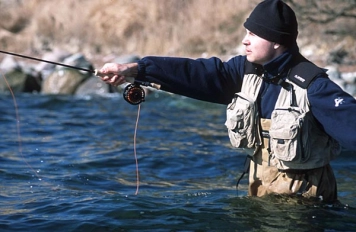


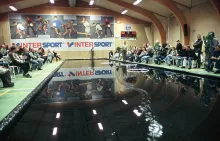



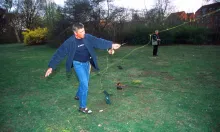

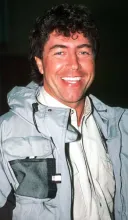
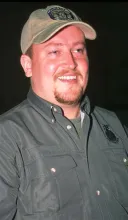


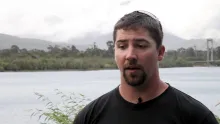
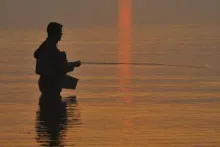
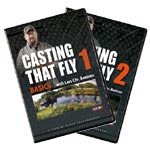
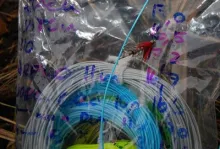
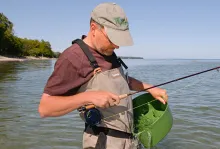

I would firmly agree
I would firmly agree with the comments by Henrik Mortensen because as a perfect example I used to watch perfect 'spey casts' carried out by what I would term the posers who were casting over water that did not hold fish. It made them quite sick of me when I crept up to the holding lies no more than 4 yards from the bank and catch fish with my home made heavy tube fly no more than an inch and a quarter long and with the first 'chuck. The method I always used was as Henrik states when he draws the fly upwards in front of the fish. I rarely bothered to fish any other way as this way does work.
Note what 'he' says when 'he's tried everything else'. I would question this with my philosophy why try other ways when one that works is successful ? However as Hugh Falkus famously and I might add truthfully and with experience said - 'the worst thing an angler can do is to be too successful'.
Could you tell me wh
Could you tell me who the champ is in casting with a bait casting reel?
Salt water.....I heard it was quit a long distance.......I don't want to say what it was because I'm doubtfull
For a great story of
For a great story of an incredible cast (er), read Frank Woolner's introduction to "Fly Fishing In Salt Water" by Lefty Kreh.
I have cast short fo
I have cast short for some species, and long for (some ) tropical species. I rarely cast more than 80 feet in the tropics. I spend a good deal of time working on long casting but I do it more for the differing conditions like the effects of winds on my cast than for the distance .
I agree that the ability to cast distance may come in handy in a small percentange of the actual time you fish but the distance thing is a little over rated .
Carl Zarelli CCI
Totally agree. Its w
Totally agree. Its what you want to do. Fishing or Casting. While fishing 45 to 50 feet casts do the trick 95% of the time. Precision and presentation of the fly is the answer. Always cast to a target, even when nymphing or fishing wet flies.
Bob Koch CCI, Atlanta Ga. USA
I just happen to com
I just happen to come across this page. Very well done article. Now while I have cast more than 150 feet with the special equipment in National tournaments (I enjoy this and it is darn good exercise for a 74-year-old angler) it is also true that I seldom make a cast of more than 10 meters (30+ feet) when I'm brown trout fishing in Midwest streams. Tis better to creep up on the fish. Yes, there are times, when fishing bigger waters (e.g., lakes, flats, big rivers), when you simply can't wade close enough, and making a long cast can be helpful, and very ego satisfying... but setting hook with all that line out can be a problem.
I agree entirely wit
I agree entirely with Henrik Mortensens final comment. I cast to fish that I know I can reach with comparitive ease...15-20 metres. At that distance under good conditions my fly usually lands close to the goal, reasonably neatly. Only very occasionally have I had the backing come through the rings on the final forward cast where the fly lands furthest away from the rod tip! Having reached the wrong side of 55 years old, I have NO intention of standing on the local rugby field, attempting to increase that distance...the time, I feel, is much better spent by the water pursuing my favourite sport!
Some of the most satisfying casts have been excecuted whilst laid on my stomach by the river with only a couple of metres of fly line in the air, and without the brownie on the near bank I was after, detecting my presence... or 10 metres of line slipping neatly between two overhanging trees behind me to fall on the graylings nose on the forward cast...and on one very memorable occasion, rollcasting around a bush to a rise I couldn't even see the epicentre of. This is angling to me, always has been and will always remain so. Tight lines...Moggy
Love this article -
Love this article - I know that I can very occasionally cast 35 yards or about 32 meters (about ten times in thirty years) as that is the length of the line that I use and I have managed to hit the backing a couple of times. That being said if I try for big distance I usually end up wearing the line and fly around my neck or attached to some other part of my body or twenty five feet up a tree on the back cast. I have even managed to catch a fish at this distance. Typically however my suggestion is to get a pair of waders that go right up to your armpits - it's generally easier to walk toward that fish under the far bank than to try to put your fly on his nose with a herculean cast.
What a fantastic art
What a fantastic article.
I always hear the gossip and get sucked into conversation about casting distance (which bores me silly), but now-a-days - I hear less about the actual fishing experiences.
I personally don't care for distance or what someone has said he has managed to reach. Most of my fish are caught within 15m or so. In my experience, the further the cast - if your presentation is that good after it - that's more line to lift out of the water.
Good old fashioned stalking right up to the fishes doorstep and "hey-presto"!
Great article Martin...just maybe...and that's a big maybe...we'll hear more about fishing facts than a few extra metres!
Ripley Davenport
Long casts
Great article.., Is it that most fish are caught 50ft and less because most don't cast that far anyway so it's obvious that this happens! If you cast 75ft the you only have 35ft to catch the fish and 50ft left to catch a fish. So the law of averages comes into play. So the statement can be quite misleading. Never the less most of my fish have been caught within 30ft and I believe they have followed the fly in.
Thanks everyone for your really interesting comments.
Regards
Chris
Casting
I was 8 when my dad handed me a fly rod for the first time! I'm not sure what age I was when he first brought me with him fishing but he used to cast a worm out on a spinning rod and told me to watch for a fish taking it! When one took it he never once took the rod off me to show me how to land it, he just told me what to do and god only knows how many I lost before I caught on! I know now that if I had have actually listened to his instructions and done what I was told I would have learned how to do it a lot more quickly! He has since told me that when he gave me the fly rod he was filled with both dread and delightment! Delightment at the thought of me learning to love what he loves but dread at how hard it was going to be to help me learn! Lol! That was 35 years ago and it was all river fishing back then and I picked up his passion for it!
My favorite rod is the first brand new rod he gave me! It's a fibreglass shakespeare 8'6ft 7#. I have a fair few rods in my armoury now of various lengths and weights and I fish mostly these days on lakes! I have a lovely greys 10'6ft 7/8# that I thought I could cast the most distance with until one day I thought I'd bring out my wee shakey just to see the how far I could cast with it compared to my big rod and was very surprised to find that there is very little difference with regard to how far I can cast with them! About 60 ft with the greys and a bit less with the shakey! After throwing the greys for a while it felt like I was casting in slow motion to keep the line in the air with the shakey lol! Much more relaxing and enjoyable! (I brought the slack after the cast back onto the reel then once I retrieved the fly I walked the line along the bank to measure it) sorry about the long post but hopefully its helpful!
The shakey
Brian,
Thanks for the comment, and yes, I have similar experiences with both glass and bamboo rods. They are such a joy to fish and cast with - not to mention catch - and the casting distance is much more dependent on your technique than the nature of the rod.
Martin